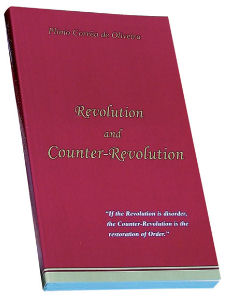This revolutionary process takes place at two different speeds. One is fast and generally destined to fail in the short term. The other is much slower and has usually proven successful.
A. The Rapid March
The precommunist movements of the Anabaptists, for example, immediately drew in various fields all or nearly all the consequences of the spirit and tendencies of the Pseudo-Reformation. They were a failure.

Several existing denominational bodies are the direct successors of the continental Anabaptists. Mennonites, Amish and Hutterites are in a direct and unbroken line back to the Anabapists of the early 16th century.
B. The Slow March
Slowly, during the course of more than four centuries, the more moderate currents of Protestantism, moving from refinement to refinement through successive stages of dynamism and inertia, have been gradually favoring, in one way or another, the march of the West toward the same extreme point.1
C. How These Speeds Harmonize
The role of each of these speeds in the march of the Revolution should be studied. It might be said that the more rapid movements are useless, but that is not the case The explosion of these extremisms raises a standard and creates a fixed target whose very radicalism fascinates the moderates, who slowly advance toward it. Thus, socialism shuns communism, which it silently admires and tends toward.

François-Noël Babeuf (1760–1797)
Even earlier, the same could be said of the communist Babeuf and his henchmen during the last flare-ups of the French Revolution. They were crushed. Yet, little by little, society treads the path along which they wished to lead it. The failure of the extremists is, then, merely apparent. They collaborate indirectly, but powerfully, in the advance of the Revolution, gradually attracting the countless multitude of the “prudent,” the “moderate,” and the mediocre toward the realization of their culpable and exacerbated chimeras.
1. See Part II, Chapter 8, 2.
Plinio Corrêa de Oliveira, Revolution and Counter-Revolution (York, Penn.: The American Society for the Defense of Tradition, Family, and Property, 1993), Part I, Ch. VI, Pgs. 31-32.










